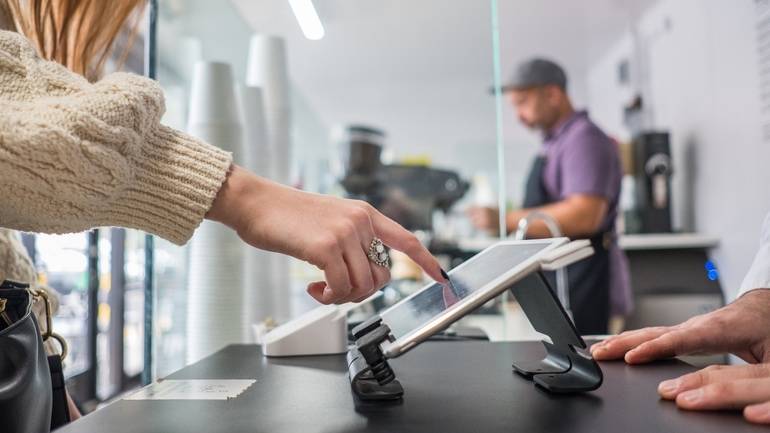If you’re looking for ways to increase your restaurant’s revenue in the wake of COVID-19, it’s time to get serious about suggestive selling.
This proven sales tactic can boost your bottom line by up to 30% on average. And when you do it right – by delivering real value to your guests – suggestive selling also helps build brand loyalty. That’s a win-win for your restaurant and your customers.
In this guide to suggestive selling, we’ll deep dive into:
- A suggestive selling definition that applies to restaurants
- How this sales tactic differs from cross-selling and upselling
- The benefits for restaurants
- 8 useful suggestive selling techniques in restaurants you can use today
What Is Suggestive Selling?
To help you master this technique, here’s a suggestive selling definition that applies specifically to restaurants.
Suggestive selling is a tactic that involves encouraging a guest (either in-house or through your restaurant online ordering system) to order menu items that are different from the ones they ordered or would typically order, in an effort to increase the value of the transaction.
This can be as simple as letting a guest who ordered a tomato soup know that you actually have a great new gourmet butternut squash soup on your menu, and asking if they’d like to try that instead. Or, it could involve telling a regular who ordered a pizza from your menu about your feature pasta for the evening, which is priced slightly higher than the dish they had their eye on, but is a one-time offering you think they’d enjoy.
The key to suggestive selling is simple: offer ideas your guests will truly appreciate and will elevate their experience. Don’t try to sell a beef tenderloin to a vegan diner simply because it’ll result in a bigger bill than a plant-based entrée – that probably won’t go over well (okay, we know you’d never pull a stunt like that, but you get the point!).

Suggestive Selling vs. Upselling
Suggestive selling in restaurants is similar to restaurant upselling, and the terms are sometimes used interchangeably. However, upselling specifically refers to instances where staff suggest an upgrade or add-on. While this may not always seem easy, knowing how to upsell is easier than you think. For example, it could be as simple as encouraging guests to make their meal a combo.
In the case of both suggestive selling and upselling, the impact is typically minimal on a per-check basis, but it can add up over time – something we’ll talk about more later on.
Suggestive Selling vs. Cross-Selling
How to increase restaurant sales? Another common restaurant sales technique is cross-selling. This involves offering your guest a different, but complementary, item in addition to what they’ve already chosen: for example, a glass of Chardonnay with their salmon dinner, or a gluten-free dessert to follow their pizza with a gluten-free crust.
Both suggestive selling and cross-selling put the guest’s needs and wants at the forefront of the transaction. This customized approach sets these sales tactics apart from less personalized methods such as simply promoting the most profitable dish on your menu to every guest who comes in.
The Benefits of Suggestive Selling for Restaurants
Suggestive selling is beneficial for everyone involved in the process:
- Your guest is satisfied because you’ve delighted them with an excellent meal;
- Your server is happy because they receive greater total tips from a bigger cash out;
- And you, the restaurateur, are thrilled because you’ve impressed your customer and increased your revenue at the same time.
Beyond leaving everyone with a smile on their face, let’s break down the main benefits of suggestive selling, and their knock-on effects.
1. Better Customer Experience
It truly is the little things that count. When you wow your guests with a great meal (something you know they’ll really enjoy), you improve their overall experience at your restaurant. And experience is important to get right, considering 73% of consumers say it influences their loyalty to a brand.
In addition, happy guests often lead to repeat business and word-of-mouth recommendations. Developing a reputation for outstanding service and making great menu recommendations through suggestive selling means that it’s worth the effort to master (more details on that coming up soon!).
2. Happier Restaurant Staff
Employee retention is critical for any restaurant. With industry turnover rates between 82% and 150%, keeping your staff happy should be a top priority.
What better way to keep your team satisfied than by empowering them to increase their check sizes and the amount of tips they take home at the end of every day? This is where suggestive selling comes in. With the proper training and a little motivation, your servers can reap the benefits of this sales technique.
3. Larger Check Sizes
Although suggestive selling typically only increases each individual guest’s bill by a small amount, the cumulative results can amount to growth that equals nearly a third of your existing revenue. Imagine what you could do with that cash – would you hire more staff, upgrade your menu, launch a new marketing campaign? The possibilities are yours to explore.
Suggestive selling not only helps your restaurant make money, it also helps you save money by driving repeat business. It’s been estimated that keeping current customers is five times more cost effective than attracting new customers. Suggestive selling through a loyalty program can help you re-engage the customers you already have, so they’ll return to your restaurant time and time again – ultimately boosting your bottom line.

8 Suggestive Selling Techniques for Restaurants
You’re now clear on a suggestive selling definition that applies to restaurants, and you understand the key benefits of this customer-focused sales tactic. It’s time to dig into the best suggestive selling techniques to try in your restaurant.
1. Ensure Your Staff Know Their Stuff
Nothing stops rapport building in its tracks like a server shaking their head at every menu item a guest asks if they’ve tried.
Set your team up for success with suggestive selling by taking the time to make sure they have a deep understanding of your menu, and that they’ve actually sampled most of the food and beverage items you offer.
You can make this process fun by hosting a tasting event for your staff. This way, when a diner asks your server if they’ve tried the brisket sandwich, the answer will be a confident, “Yes, but the rack of ribs is even more amazing! Do you want to give it a try?”
Guests appreciate personal recommendations, so encourage your staff to suggest menu items that they themselves love – but only if it makes sense, of course.
2. Play Matchmaker
On the topic of recommendations, your servers should be well versed in which dishes have similar flavor profiles so they can make helpful suggestions to guests based on the meal the customer was initially planning to order
This expertise can help make the suggestive selling process feel natural and effortless, like an inevitable conclusion. It will also help establish your restaurant’s reputation for superior service from a knowledgeable front-of-house team.
Bonus points if you suggest a fun upsell in addition to your suggestive selling approach. For example, if a guest has their eye on fries, you could point out the sweet potato fries on your menu, then float the idea of pairing them with a curry dip. Your guests are sure to remember something creative, and they may even mention it to a friend or two.
3. Ask Your Guests Questions
The benefits of this suggestive selling technique are twofold.
First, when staff ask your diners questions, it demonstrates interest and reinforces your restaurant’s commitment to the customer experience. Taking the time to engage in conversation shows that your employees aren’t simply worried about rushing off to the next table.
Second, asking questions is one of the best ways to gather information about your guests straight from the source. According to Groupon, asking “Hi, have you been here before?” can boost sales by up to 16%. And, asking about your customers’ food and beverage preferences better equips your servers to make customized suggestive selling recommendations.
4. Offer a Restaurant Loyalty Program
Not only is it more cost effective to retain an existing customer than to acquire a new one, but existing customers are often more valuable to a restaurant’s bottom line. Creating a restaurant loyalty program can encourage your guests to dine with you 20% more often and spend 20% more than they would if they weren’t part of the program.
Rewards-based loyalty programs are also popular among diners because the more they spend at your restaurant, the greater rewards they earn. This makes loyalty programs an ideal opportunity for suggestive selling. For example, your servers can recommend items that may be a bit pricier, but offer higher rewards points to your guests. You can also build this feature into your online ordering system so your guests can earn points on specific takeout and delivery items as well.
5. Use Technology to Help Drive Sales
Mastering suggestive selling techniques involves understanding how to leverage your restaurant tech to help you increase revenue. For example, you can add prompts to your point of sale (POS) system to serve as a reminder for your staff to suggest items that guests may not have thought about.
Your POS system can also take suggestive selling straight to your diners. If your menus are on mobile iPads, servers can show a photo of any menu item to entice your guests to make room for a decadent looking dessert they weren’t even considering.
In addition, quick service restaurants should consider implementing self-ordering kiosks that can automatically prompt guests with options they might not have considered or different variations on their order that they might like to try.

6. Get Your Restaurant on Delivery Apps
Takeout and delivery have exploded in popularity due to the COVID-19 pandemic. Luckily for restaurateurs, suggestive selling is built into many delivery apps and online ordering platforms, which often showcase best sellers or daily specials right at the top of your online menu. This clever design can encourage guests to choose dishes they might not have considered, instead of immediately selecting what they had originally intended to order.
These third-party apps also help you expand your potential customer base. As public health regulations continue to evolve, and considering that more than 40% of Americans report they’re highly likely to order from restaurants during lockdown, exploring delivery apps is a way to get more eyes on your menu and use your suggestive selling tactics.
7. Use Customer Data to Personalize Your Offers
Leveraging tech like restaurant reservation software enables you to create guest profiles that include food and beverage preferences. This way, the next time a guest dines with you, your server can make a personalized suggestive selling recommendation based on the guest’s profile. For instance, if you guest ordered a seafood dish last time, why not suggest your pricey but delicious seafood special right off the bat?
Tailoring your suggestive selling approach to each individual guest is an excellent way to impress your customers, and increase the likelihood that they’ll opt for the dish you’re trying to suggest – even if they originally intended to order something else!
8. Document Your Plan and Make it Fun
Getting your suggestive selling strategy down on paper and incorporating your revenue goals will help ensure you stick to your plan.
Start by bringing your team into the loop so everyone understands what’s expected of them and can work toward a shared objective. Make suggestive selling part of the onboarding process for new staff, too.
You can also try sprinkling a little competition into the mix to incentivize your staff to kick their suggestive selling into high gear, while making it fun. Use your POS to track your total sales by server, and reward the highest earner with a prize.
You may also want to develop a similar strategy for using suggestive selling in the takeout and delivery side of your business, so you can make the most of your online ordering system and any third-party delivery apps you’re using.
Get Started with Suggestive Selling
You now have all of the information you need to make suggestive selling a seamless part of the daily routine at your restaurant. We’ve covered a suggestive selling definition and talked about the benefits for guests, restaurant staff, and your overall business.
We’ve also explored several suggestive selling techniques in restaurants that you can use right now, including educating your staff about your menu, launching a loyalty program, using technology, and so much more.
Happy selling!
Free Restaurant Cleaning Checklist
Sign up for our free weekly TouchBistro Newsletter







